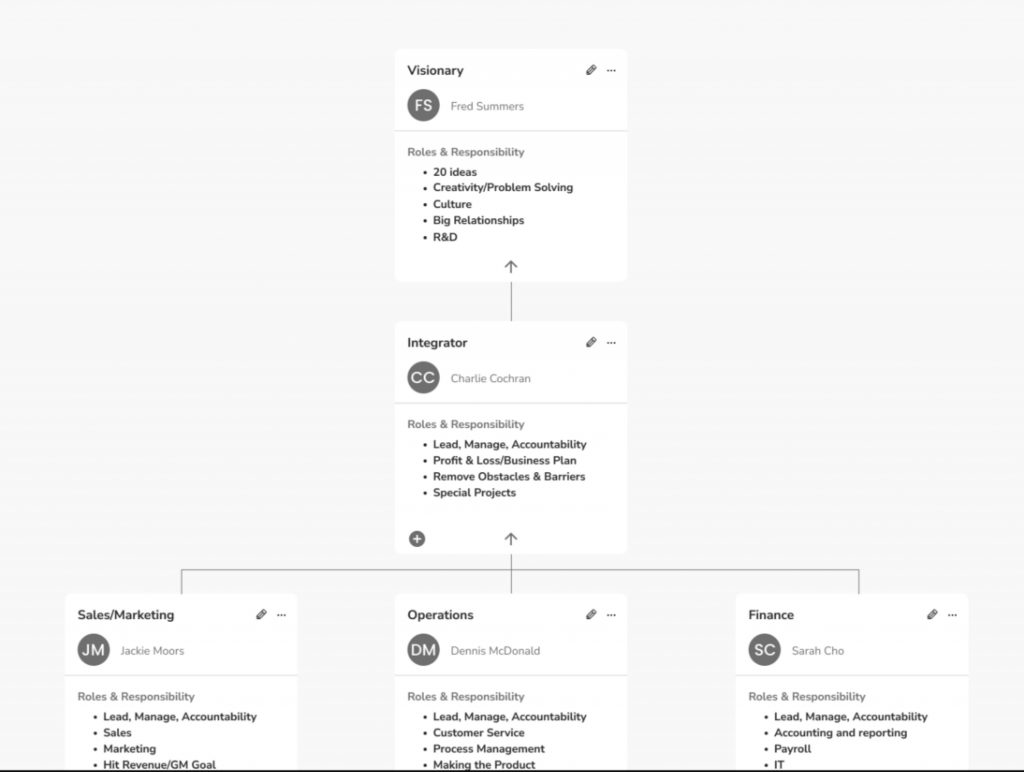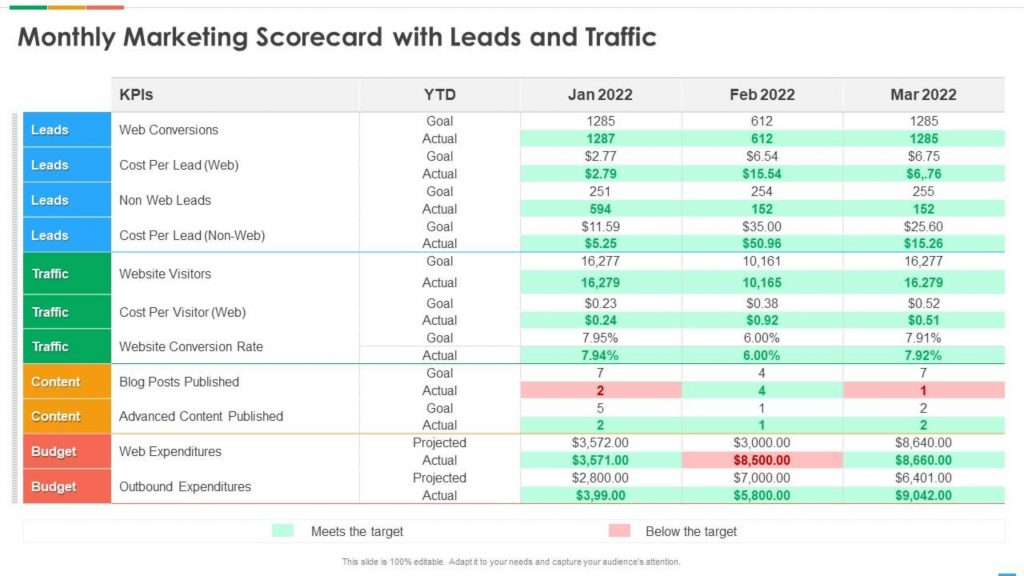
The Ultimate Guide to EOS Marketing Success
With the rapid advancement of technology and, as a result, increased competition in the industrial sector, success requires more than just producing quality products.
You also need a strategic approach to marketing that resonates with your audience, amplifies your brand, and drives tangible results. As such, a powerful marketing strategy can be the difference between your industrial business standing out and thriving or blending in and failing.
Enter Enterprise Operating System (EOS) marketing strategy—a strategy that will help you attract your ideal clients and drive sustainable growth through great and disciplined execution.
You’ve probably heard of organizations using EOS to streamline their operations successfully. But how do you use the same system to ensure marketing success? This article will examine how you can leverage the power of EOS to enhance your marketing efforts and improve results.
Let’s start with the basics.
What Is EOS®?
EOS® is a comprehensive operational framework with practical tools designed to help businesses improve their processes and systems. It aligns and synchronizes all the parts of a business to produce better results.
The EOS model has six core components: vision, data, people, issues, process, and traction. By mastering these EOS® components, you can clarify your vision, align your team, navigate challenges, capitalize on opportunities, and generally improve your daily operations.
V/TO™, which stands for Vision/Traction Organizer™, is one of the foundational tools in EOS®. This document serves as the blueprint for your organization’s plans and forecasts, guiding you on when and how to take action on each element of your strategic success and growth plan.
V/TO™ covers eight key elements, including a detailed marketing strategy for your organization. We will discuss each element in detail later.
How EOS Marketing Can Help
Implementing EOS in your industrial business’s marketing strategy can really transform your marketing efforts and their results. Here’s how:
1. Vision for Marketing
Establishing your marketing vision is crucial to ensuring your marketing efforts align with your overall business goals. Also, you must ensure that everyone in your organization is working toward the same objectives.
When you adopt EOS, defining your marketing vision is the automatic first step. It provides a framework for identifying what you want to achieve with your marketing efforts. EOS will also help you refine your vision into a clear, concise statement that everyone in your organization can easily communicate and understand.
There are a couple of aspects a good marketing vision must have. First, it should highlight your long-term goals and translate them into specific marketing objectives. So, start by identifying where you want your company to be in, say, the next five to 10 years. You can then break down your five- or 10-year targets into shorter sprint goals—we’ll discuss vision targets later in the article.
Your marketing vision should also be grounded in your company’s core values to ensure alignment in all your marketing efforts. This alignment will reinforce your brand identity and resonate with your audience, fostering trust and brand loyalty.
Besides that, ensure your vision clearly articulates your unique selling proposition. This will not only guide your messaging and positioning but also highlight what sets your company apart from the competition.
2. Strategic Marketing Approach
With a clear vision in place, you need to create a strategic roadmap to achieve your marketing goals. The EOS framework emphasizes a disciplined, strategic approach to marketing, which helps you easily reach your marketing goals.
This involves setting clear, measurable goals that align with your vision. Whether it’s increasing your manufacturing website traffic, generating leads, or boosting retention, clear goals will help you stay focused and make it easy to track your progress. They also inform crucial factors such as your target audience, ideal marketing channels, and budget allocation.
Additionally, the framework requires that you factor in how you’ll track and review your marketing plan’s key performance indicators (KPIs). These metrics help you measure the success of your marketing activities. By regularly reviewing them, you can check if you’re still on track and adjust your marketing approach as needed.
EOS also encourages regular review meetings to assess progress, discuss challenges, and make necessary adjustments. This ensures your marketing strategy remains dynamic and responsive to changing market conditions.
The two fundamental types of EOS meetings are level 10 meetings, which are typically held weekly, and quarterly meetings, which are held once a quarter.
3. Optimizes Team Roles
EOS® emphasizes the importance of clearly defined roles within your marketing team. It uses an accountability chart instead of a traditional organizational chart.
Check out the accountability chart example below.

The chart is a more precise organizational tool that defines and visualizes an organization’s structure based on functions, roles, and responsibilities rather than titles and positions.
The chart outlines individual roles to provide clarity and alignment within the team. This helps prevent overlap and ensures all tasks are completed effectively without wasting resources or effort.
You can have the chart in physical copies or as a digital asset on your industrial website or project management software, which is better for easy access.
4. The EOS Marketing Scorecard
A marketing scorecard is a document you use to track the success of your industrial business’s marketing efforts. It lets you measure how well each marketing campaign or strategy performs against your KPIs. This will help you quickly identify the best-performing marketing initiatives, which will inform resource allocation.
Check out this great scorecard example.

A scorecard is a critical component of the EOS marketing framework. Therefore, by diligently measuring your EOS scorecard metrics, you can gain valuable marketing insights to help you make data-driven decisions and ultimately boost business growth.
A great EOS scorecard will include the metric, the marketing team member in charge of the metric, the goal, and the actual score.
Some of the key marketing metrics you should track include website traffic, leads generated, conversion rates, client acquisition, customer engagement, and return on investment. Track these metrics every week to identify any issues early.
Are you coming in short on all your marketing goals? We can help you turn that around. We have a deep understanding of tried-and-tested marketing tactics that help boost traffic, generate leads, and enhance your brand reach.
Now, let’s discuss the core document that will guide your marketing efforts and help you stay aligned long enough to enjoy the benefits of EOS marketing—the V/TO™.
8 key elements of the Vision/Traction Organizer™
The Vision/Traction Organizer™ (V/TO) consists of eight key elements that help you articulate your business vision and create a plan to achieve it. They include:
Core Focus™
The Core Focus™ defines your company’s purpose, cause, passion, and niche. It clarifies what you do best, why you do it, and the value you are adding to the market, helping you stay aligned with your mission.
Marketing Strategy
Your marketing strategy outlines how you will attract and retain customers. It includes defining your target market, understanding their needs, and positioning your products or services to effectively meet those needs.
Core Values
Core values are the guiding principles that shape your company culture. They represent what your organization stands for and how it operates, especially how you interact with both customers and employees. Additionally, they ensure everyone in the organization is aligned and working toward the same goals.
Examples of core values you can have include transparency, integrity, innovation, and accountability.
10-Year Target™
The 10-Year Target™ sets a long-term vision for your company that paints a clear picture of where you envision your company in the future. It provides direction and inspiration, guiding your marketing efforts. Though your 10-Year Target should be ambitious, ensure it is also achievable.
3-Year Picture™
The 3-Year Picture™ breaks down the 10-Year Target™ into smaller, actionable steps. It defines specific milestones, objectives, and initiatives to propel your organization toward its long-term goal. It helps focus your EOS marketing strategy on achievable goals and measures progress.
1-Year Plan™
The 1-Year Plan™ outlines the coming year’s priorities, projects, and initiatives. It translates the broader strategic objectives into actionable tasks and timelines.
Your 1-Year Plan™ should consist of three to seven key goals in your long-term vision, which will help you get closer to achieving both your 3-Year Picture and 10-Year Target.
Rocks
Rocks are the most important tasks and projects that must be completed within a specific time frame, typically a quarter. They represent the critical priorities that will propel your organization and help you progress toward achieving your long-term goals. You should have seven or fewer “rocks” to ensure your team does not get overwhelmed.
Issues
Issues are potential roadblocks that may hinder your marketing success. By identifying these risks or challenges beforehand, you can prepare for the worst-case scenarios that would otherwise derail you and devise the perfect solutions.
Outlining these eight key elements of the V/TO™ will empower your organization to align your marketing efforts with your vision and achieve even your most ambitious goals.
Understanding the V/TO™ Marketing Strategy
Your marketing strategy will clearly elaborate how you will sell your industrial product or service. To develop your marketing strategy, you will need to pay attention to these four elements:
Target Market
Defining your target market is the cornerstone of any successful marketing strategy, and the EOS marketing strategy is no different.
For industrial companies, this involves a detailed understanding of the specific industries, companies, and decision-makers who are most likely to buy your products or services.
Define the characteristics of your ideal customers, such as industry type, company size, and geographic location. Then, assess and establish a deep understanding of your target market’s specific needs, challenges, and pain points.
Lastly, create detailed buyer personas of your ideal customers to guide your marketing efforts and ensure your messaging resonates with the right audience.
Three Uniques™
The Three Uniques™ are the unique advantages or selling points that set your company apart from the competition. Clearly defining and articulating these benefits will attract the right customers and strengthen your market position.
To identify your Three Uniques™, leverage your company’s unique internal strengths and capabilities. You can also consider conducting a competitive analysis to find opportunities and gaps.
Additionally, collect customer feedback to understand why your existing customers choose your products or services.
Proven Process
Your proven process outlines the steps you take to deliver your products or services. Showing this process builds trust with potential customers by demonstrating reliability and consistency.
Therefore, ensure you communicate it clearly on your industrial website and other marketing channels to build trust and credibility with potential customers.
For instance, you can use a step-by-step workflow with photos to clearly define your service delivery or product creation process. For example, Toyota shares its car production process, showing how its cars are created from scratch.

You can also share customer testimonials that prove you have been able to meet customer needs.
Guarantee
A strong guarantee can be a powerful marketing tool. It reassures potential customers of the quality and reliability of your offerings, building confidence in your brand. This makes it easier for them to choose your company over competitors.
Your guarantee should clearly show how your product solves a specific problem in the industry. For instance, a company like Airbus guarantees safer and more sustainable aerospace solutions, which resolves the CO₂ emissions issue the aviation industry faces.

To build customer confidence further, offer satisfaction guarantees, such as lifetime or money-back guarantees. Ensure they are highlighted on key pages of your industrial website.
Challenges of Implementing an Effective EOS Marketing Plan
Implementing an effective EOS marketing strategy can significantly enhance your business’s performance, but it’s not without challenges. Here are some common challenges you might face:
- Resistance to change: Employees may hesitate to adopt new methodologies due to a lack of understanding or fear of the unknown. To overcome this, provide comprehensive training, maintain open communication, and actively involve your employees in decision-making.
- Maintaining consistency: Inconsistent application of EOS tools can lead to irregular results. So, ensure you develop standard operating procedures, provide ongoing training, and conduct regular audits to ensure everyone adheres to established marketing processes.
- Adapting to market changes: The industrial sector is constantly evolving. Hence, you must conduct continuous market research and adjust your EOS marketing plan to market trends if you want to stay ahead of the curve.
Understanding and proactively preparing for these obstacles will help ensure a smoother transition and even more successful implementation.
In Closing
The EOS framework offers various benefits to organizations. Some key ones include a well-defined marketing vision, a more strategic marketing approach, optimized team roles, and excellent team performance tracking.
The V/TO™, one of the core components of EOS will guide you on how and when to take action on the marketing element in your plan for great results. It covers eight key elements: Core Focus™, Marketing Strategy, Core Values, 10-Year Target™, 3-Year Picture™, 1-Year Plan™, Rocks, and Issues.
Follow the above guidelines, and you will be well on your way to mastering EOS marketing. But remember that just like with any marketing strategy, you must continuously track and iterate your efforts to achieve sustained success.
Reach out to us any time to enjoy expert marketing services that help you reach your ideal audience at the right time.



